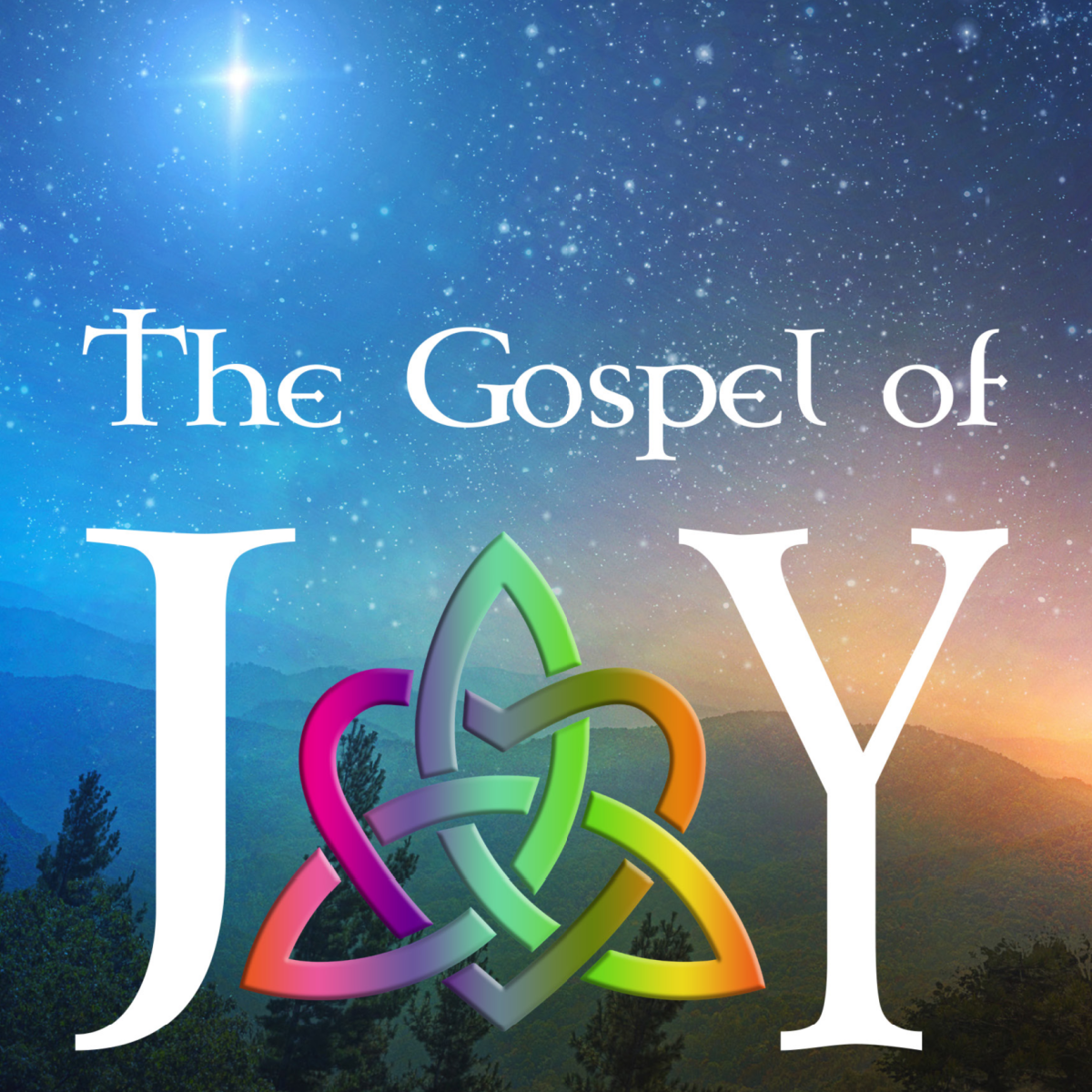From Ego and Fear to Love, Joy, and Unity Across World Traditions
Introduction
Across time and geography, humanity has sought to answer the great questions of existence: Who am I? Why am I here? How do I live in harmony with the greater whole? Every tradition — whether ancient or modern, spiritual or secular — carries a vision for the transformation of the human heart. Beneath their differences in language, symbols, and practice exists a shared rhythm — the deep, living center where the soul meets the Infinite, and love becomes the very ground of being.
Brother Wayne Teasdale, a Catholic lay monk and interspiritual teacher, offered a profound vision for global spiritual unity in his work The Mystic Heart: Discovering a Universal Spirituality in the World’s Religions. Teasdale coined the term interspirituality to describe the shared core of the great traditions — the universal wisdom and transformative experience that transcends any single path while being enriched by them all. His vision of the mystic heart was that of a unifying center where humanity could come together in compassion, justice, and joy, without erasing the beauty of our diverse heritages.
The mystic heart is not a doctrine but an experience — the awakening to our deepest identity beyond ego, beyond fear, beyond separation. It is the place where all wisdom traditions touch, where the many paths converge into one truth: that we are made for love, for joy, for unity.
Interspirituality, as Teasdale envisioned it, is the recognition of this shared ground. It honors the beauty and uniqueness of each tradition while affirming that the essence of transformation — from an old self rooted in fear and illusion to a new self rooted in love and wholeness — is universal. In this way, the mystic heart becomes both a meeting place and a bridge: a space where diverse paths illuminate one another, and where the human family can walk together without erasing the colors of its many threads.
At the summit, each tradition speaks of a life fully alive in the qualities of unitive consciousness: peace, compassion, freedom, and always, joy. This joy is not fleeting happiness, but the deep, steady gladness of a soul at home in the truth, awake to the sacredness of all life.
This guide explores 21 pathways — from the world’s oldest spiritualities to modern psychology — each offering its own map for the journey from separation to unity, from fragmentation to wholeness. In every case, the path leads through inner work: the practices and insights that dissolve the grip of the ego, open the heart, and align the soul with what is most real and lasting. Together, they reveal the profound interconnectedness of humanity’s wisdom traditions — how each offers its own way to unitive consciousness while remaining true to its language, heritage, and sacred vision. Each is a living stream, flowing toward the same vast ocean of love, joy, and unity.
1. Indigenous Spiritualities (please see list in the Appendix)
Origin: Prehistoric, worldwide (predating written history, with archaeological roots c. 30,000 BCE and earlier)
Pathway: Living in direct relationship with the Earth, ancestors, and the spirit world, guided by respect, reciprocity, and balance. Transformation moves the individual from isolation into harmony with all life, recognizing kinship with all beings and seeing the sacred in every part of creation.
Practices:
- Ceremony and ritual (seasonal, life-stage, healing)
- Storytelling and oral wisdom traditions
- Vision quests and initiations
- Offerings and acts of reciprocity to nature
- Communal dances, drumming, and song
Culmination: Life becomes a seamless dance with creation, where joy is the heartbeat of the land and community. The person walks in beauty, guided by ancestral wisdom and aware of their role in the web of life. This joy is not a fleeting emotion but an enduring state of belonging, where every sunrise, river, and shared meal carries the blessing of connection. “The drumbeat of the earth is the drumbeat of our hearts; in joy we walk the path of life.” — Indigenous teaching; “Joy is found in living in right relationship with all our relations.” — Indigenous proverb.
2. Hinduism
Origin: Indian subcontinent (c. 2500–1500 BCE)
Pathway: Liberation (moksha) through self-realization and union with the Divine (Brahman), transcending the cycle of rebirth (samsara) by dissolving ego-identification. The soul awakens to its eternal nature, recognizing that all beings are expressions of the same Divine reality.
Practices:
- Yoga (paths of devotion, knowledge, action, meditation)
- Chanting mantras
- Pilgrimage to sacred sites
- Study of scriptures (Vedas, Upanishads, Bhagavad Gita)
- Ritual worship (puja)
Culmination: Life is lived in the bliss of union with the Divine, where joy (ananda) flows effortlessly as the self is recognized as one with all. Every action is sacred and offered as devotion. This joy pervades every breath, seeing the world itself as the body of God, and one’s own being as an inseparable wave in the ocean of the Absolute. “Ananda is the essence of Brahman.” — Taittiriya Upanishad; “Where there is truth, there is joy; where there is joy, there is the Self.” — Hindu teaching.
3. Judaism
Origin: Ancient Near East (c. 2000–1500 BCE)
Pathway: Living in covenant with God through Torah observance, justice, and compassion. Transformation moves the heart from hardness to holiness, rooted in gratitude and trust in God. Faith matures into a living relationship of love, reverence, and ethical responsibility.
Practices:
- Prayer and blessing
- Study of Torah and Talmud
- Observance of Sabbath and festivals
- Acts of justice (tzedakah) and lovingkindness (chesed)
- Community worship and celebration
Culmination: A life of righteousness and peace in harmony with God’s will, where joy is both a duty and a gift of faithfulness. This joy becomes a steady light in the soul, a strength through trials, and a song of gratitude in times of blessing. “Be glad in the Lord and rejoice, O righteous, and shout for joy, all you upright in heart.” — Psalm 32:11; “Light is sown for the righteous, and joy for the upright in heart.” — Psalm 97:11.
4. Zoroastrianism
Origin: Ancient Persia (c. 1200–1000 BCE)
Pathway: Aligning life with Asha (truth, order) through good thoughts, good words, and good deeds, overcoming the forces of falsehood. Transformation is a conscious choice to live in harmony with divine order, blessing both self and world.
Practices:
- Daily prayers facing light or fire
- Moral purity and truth-telling
- Charity and care for creation
- Ritual observances of holy days
- Participation in community worship
Culmination: Life is marked by the joy of a clear conscience and alignment with cosmic order, bringing blessings to self and community. This joy is experienced as a radiant trust in the victory of good, a steadfast peace born from knowing one’s life strengthens the harmony of creation. “…grant us joy through the good mind and the works of truth.” — Avesta, Yasna 28.2; “Happiness comes to the one who brings happiness to others.” — Avesta, Yasna 43.1.
5. Jainism
Origin: India (Parshvanatha c. 800–700 BCE; codified by Mahavira c. 599–527 BCE)
Pathway: Liberation (kevala jnana) through nonviolence (ahimsa), truth, and detachment, freeing the soul from karmic bondage. As passions are released, compassion and clarity illuminate every thought and deed.
Practices:
- Nonviolence in thought, word, and deed
- Fasting and ascetic discipline
- Meditation and self-inquiry
- Scriptural study
- Service to all living beings
Culmination: Living in perfect peace and harmlessness, the soul shines in its natural state of infinite knowledge, perception, bliss, and energy. Joy is found in harmlessness and pure compassion. In this state, the soul becomes a beacon of benevolence, blessing all life without preference or prejudice. “Nonviolence is the highest religion, and in it is found the highest joy.” — Jain scripture; “The soul that has conquered itself finds joy in all worlds.” — Jain teaching.
6. Confucianism
Origin: China (c. 551–479 BCE, life of Confucius)
Pathway: Cultivating virtue (ren), practicing proper relationships, and contributing to social harmony. Transformation refines the self for the good of all and anchors the heart in moral beauty.
Practices:
- Self-cultivation through study
- Honoring family and ancestors
- Observing rites and rituals (li)
- Serving the community and state
- Practicing benevolence and righteousness
Culmination: Joy arises from living a morally exemplary life that uplifts family, community, and society. The harmonious person radiates contentment and inspires others. This joy is the quiet fulfillment of knowing one’s life contributes to the unfolding of a just and beautiful social order. “The superior person delights in virtue.” — Analects 4:2; “To practice five things under all circumstances constitutes perfect virtue… joy, generosity, sincerity, earnestness, and kindness.” — Confucius.
7. Buddhism
Origin: India (c. 563–483 BCE, life of Siddhartha Gautama)
Pathway: Awakening to the nature of reality through ethical living, meditation, and wisdom, ending suffering (dukkha) by realizing non-attachment and compassion. Awareness matures into boundless compassion and serenity.
Practices:
- Mindfulness meditation
- Ethical precepts
- Study of Dharma
- Compassionate action
- Chanting and devotional practices
Culmination: The awakened life is marked by equanimity, compassion, and a serene joy untouched by changing conditions. This joy arises not from clinging but from freedom, flowing naturally into kindness for all beings. “The joy of living in the way is the greatest joy.” — Dhammapada 354; “When one perceives the truth, joy arises unshakable.” — Buddhist teaching.
8. Taoism (Daoism)
Origin: China (c. 4th–3rd BCE, Laozi and Zhuangzi)
Pathway: Aligning with the Tao — the Way of nature — by living simply, spontaneously, and in harmony with the flow of life. Transformation comes through releasing control and trusting the natural unfolding of the universe.
Practices:
- Meditation and breathing exercises (qigong)
- Simplicity in lifestyle
- Studying Taoist texts (Tao Te Ching, Zhuangzi)
- Contemplating nature
- Wu wei (effortless action)
Culmination: Joy is the gentle radiance of a life lived in flow, where self and nature are no longer separate and peace permeates every moment. This joy is a quiet, unforced contentment that arises from knowing one is a seamless part of the great unfolding of the Way. It is the laughter of the spirit at ease in the universe. “In the presence of the Tao, joy is complete.” — Taoist teaching; “He who is in harmony with the Tao is joyful at heart.” — Taoist proverb.
9. Stoicism
Origin: Greece → Rome (c. 300 BCE onward)
Pathway: Living in accord with reason and virtue, accepting what is beyond one’s control, and focusing on one’s own moral purpose. Transformation shifts the mind from turbulent passions to steady inner freedom.
Practices:
- Daily reflection and journaling
- Contemplating mortality (memento mori)
- Practicing self-control and moderation
- Fulfilling one’s duties with integrity
- Viewing challenges as opportunities for virtue
Culmination: Joy is the unshakable contentment of a virtuous soul, free from enslavement to external circumstances. It is the deep satisfaction of living in moral integrity, where peace and purpose walk hand in hand. In this state, every trial is met with courage, and every blessing with gratitude. “Cheerfulness in all things is the mark of a great soul.” — Seneca, On the Happy Life 3.4; “The wise man is joyful in what he has, not distressed by what he has not.” — Stoic teaching.
10. Christianity
Origin: Judea/Roman Empire (c. 30 CE)
Pathway: Following the way of Jesus Christ in love, forgiveness, and service, receiving new life through grace. Transformation is dying to the old self and living as a new creation in Christ.
Practices:
- Prayer and worship
- Reading and meditating on Scripture
- Acts of charity and service
- Participation in sacraments
- Forgiveness and reconciliation
Culmination: Joy is the fruit of the Spirit, an abiding gladness rooted in God’s love and eternal promises. Life becomes a witness to hope and compassion, overflowing in love for God and neighbor. This joy is unshaken by trials, anchored in the assurance of resurrection life and divine presence. “These things I have spoken to you so that my joy may be in you, and that your joy may be complete.” — John 15:11; “Rejoice in the Lord always; again I will say, Rejoice.” — Philippians 4:4.
11. Hermeticism
Origin: Greco-Egyptian world (c. 1st–3rd CE)
Pathway: Seeking divine knowledge (gnosis) through the study of the cosmos, the mind, and the Divine within. Transformation involves awakening to the unity of all existence and the divinity of the human soul.
Practices:
- Contemplation of Hermetic texts (Corpus Hermeticum)
- Meditation on the unity of all things
- Alchemical symbolism and inner transformation
- Observation of nature as divine revelation
- Ritual invocation of divine powers
Culmination: Joy is the illumination of the soul when it awakens to its eternal and divine nature, seeing the entire cosmos as a living expression of the One. This joy is a serene ecstasy that unites wisdom and wonder, where the mind rests in truth and the heart in divine light. “To the wise, joy comes in knowing the All is One.” — Hermetic teaching; “When the soul knows itself and the All, it rejoices in the Good.” — Hermetic fragment.
12. Islam (including Sufism)
Origin: Arabia (610–632 CE; Sufism formalized 8th–9th CE)
Pathway: Submission (Islam) to the will of God (Allah) through faith, prayer, charity, fasting, and pilgrimage. Transformation deepens into remembrance (dhikr) and love of God, as in the Sufi path of the heart.
Practices:
- Five daily prayers (salat)
- Recitation of the Qur’an
- Fasting during Ramadan
- Almsgiving (zakat)
- Pilgrimage to Mecca (hajj)
- Sufi remembrance, music, and poetry
Culmination: Joy is the tranquility (sakina) of a heart fully surrendered to God and the bliss of intimacy with the Beloved. In this state, every breath is praise, and every action is service. It is the sweetness of knowing one’s life is held in divine mercy. “The friends of God — no fear shall come upon them, nor shall they grieve. They shall have joy in the life of this world and the next.” — Qur’an 10:62–64; “When the heart remembers God, it dances in joy.” — Sufi saying.
13. Shinto
Origin: Japan (emerging prehistoric; codified c. 8th CE)
Pathway: Living in harmony with the kami (divine spirits) through purity, gratitude, and celebration of life. Transformation is a deepening attunement to the sacred in nature and community.
Practices:
- Purification rituals (misogi, harae)
- Visiting shrines
- Seasonal festivals (matsuri)
- Offerings to the kami
- Daily gratitude practices
Culmination: Joy is the bright-hearted gratitude of a life lived in harmony with the kami and the rhythms of nature. It is the lightness of spirit that comes from purity of heart and the celebration of life’s blessings. This joy ripples through family, community, and land like sunlight on water. “To live in harmony with the kami is to live in joy.” — Shinto saying; “When the heart is pure, joy is its natural companion.” — Shinto proverb.
14. Sikhism
Origin: Punjab, India (1469–1708 CE, life and Guruship of the Ten Gurus)
Pathway: Living in remembrance of God’s Name (Naam), equality, service, and devotion. Transformation is the awakening to oneness with God and all humanity.
Practices:
- Daily prayer and meditation on God’s Name
- Singing hymns (kirtan)
- Serving others (seva)
- Honest living
- Community worship in the gurdwara
Culmination: Joy is the bliss (anand) of union with the Divine, expressed through song, service, and fearless living. In this state, love flows freely to all without distinction, and life becomes an offering of devotion. This joy is radiant, inclusive, and unshakable in the face of hardship. “He alone is in bliss, who loves the Lord.” — Guru Granth Sahib; “Where there is the Name of the Lord, there is joy forever.” — Sikh scripture.
15. Baha’i Faith
Origin: Persia (1844 CE)
Pathway: Recognizing the unity of all religions and humanity, and working for justice, peace, and the oneness of the world. Transformation moves the soul from separation to universal love, embracing all as members of one human family.
Practices:
- Daily prayer and meditation
- Service to humanity
- Study of sacred writings
- Community-building activities
- Working for unity and justice
Culmination: Joy is the radiance of a heart that sees no stranger and a mind that envisions the earth as one home. Life becomes a continuous act of service, fueled by the light of unity and the delight of mutual upliftment. This joy is the confident step of a soul aligned with the divine purpose of creation. “The more we search for joy in the path of service, the more it will be increased.” — ‘Abdu’l-Bahá; “So powerful is the light of unity that it can illuminate the whole earth.” — Bahá’u’lláh.
16. New Thought/Science of Mind
Origin: United States (late 19th–early 20th CE)
Pathway: Realizing the creative power of thought and aligning mind with divine truth, love, and abundance. Transformation occurs as limiting beliefs dissolve and consciousness expands to embrace infinite possibility.
Practices:
- Affirmative prayer and visualization
- Meditation
- Affirmations and positive thinking
- Creative expression
- Service and generosity
Culmination: Joy is the natural state of a mind rooted in truth and a heart open to infinite good. Life flows with creativity, harmony, and a deep sense of connection to all. This joy is an ever-renewing source of energy, shaping a life that reflects the highest vision of the soul. “Joy is the infallible sign of the presence of God.” — Teilhard de Chardin (embraced in New Thought teaching); “The kingdom of heaven is within you, and in that awareness is joy without end.” — New Thought principle.
17. Secular Humanism
Origin: Europe/Global (Enlightenment roots 18th CE; organized 20th CE)
Pathway: Living ethically and meaningfully without reliance on supernatural beliefs, guided by reason, compassion, and human dignity. Transformation is a deep commitment to the flourishing of self and others.
Practices:
- Critical thinking and inquiry
- Acts of kindness and community service
- Commitment to human rights
- Lifelong learning
- Engagement in civic life
Culmination: Joy is the fulfillment that comes from contributing to a better world and living with integrity to one’s values. It is the satisfaction of knowing that one’s efforts have made life richer for others. This joy is grounded, purposeful, and fully present in the here and now. “The greatest joy is to do good for others.” — Humanist saying; “Happiness depends upon ourselves.” — Aristotle (embraced by humanist ethics).
18. Modern Psychology (Jungian & Positive Psychology)
Origin: Europe/Global (late 19th–20th CE)
Pathway: Integrating the conscious and unconscious self, embracing shadow and light, and cultivating strengths for well-being. Transformation moves a person toward wholeness and self-actualization.
Practices:
- Depth-oriented psychotherapy
- Dream work and active imagination
- Mindfulness and self-reflection
- Strength-based practices
- Acts of meaning and engagement
Culmination: Joy is the authentic expression of a fully integrated self, where inner conflicts have been transformed into creative energy. This joy is the freedom to live with meaning, purpose, and inner harmony, contributing one’s unique gifts to the world. “Happiness is not out there for us to find. The reason that it’s not out there is that it’s inside us.” — Sonja Lyubomirsky; “The privilege of a lifetime is to become who you truly are.” — Carl Jung.
19. Rastafarianism
Origin: Jamaica (1930s, 20th CE)
Pathway: Living in alignment with Jah (God), natural law, and African identity, awaiting liberation and the fullness of Zion. Transformation is the awakening of dignity, community, and spiritual freedom.
Practices:
- Prayer and meditation on Scripture
- Reggae music as praise and prophecy
- Ital (natural) diet
- Community gatherings (groundings)
- Acts of liberation and justice
Culmination: Joy is the liberation song of a people and a person walking in harmony with Jah, free in body, mind, and spirit. It is the deep contentment of knowing one’s life is rooted in truth, culture, and divine love. This joy is communal, vibrant, and celebratory, a living foretaste of Zion. “The joy of the Lord is my strength.” — Biblical verse embraced in Rastafari; “In Zion there is fullness of joy.” — Rastafarian teaching.
20. Wicca
Origin: Britain (mid-20th CE)
Pathway: Honoring the cycles of nature, the Divine Feminine and Masculine, and the magic of life. Transformation is the awakening to one’s power as a co-creator with the natural and spiritual worlds.
Practices:
- Seasonal Sabbats and lunar Esbats
- Ritual and spellcraft
- Meditation and visualization
- Nature connection
- Coven gatherings and solitary practice
Culmination: Joy is the dance of the soul with the turning of the seasons, the intimacy with earth and moon, and the empowerment of living in harmony with magic and mystery. This joy is sensual, sacred, and playful, flowing in the balance of the seen and unseen. “An it harm none, do what ye will — in love and joy.” — Wiccan Rede; “The joy of the earth is the joy of the witch.” — Wiccan teaching.
21. A Course in Miracles
Origin: United States (1965–1972 CE)
Pathway: Shifting perception from fear to love through forgiveness, recognizing the illusory nature of separation. Transformation brings the mind into alignment with truth and peace.
Practices:
- Daily workbook lessons
- Forgiveness as a spiritual practice
- Contemplation of the text
- Joining in holy relationship
- Prayer and meditation
Culmination: Joy is the inevitable result of seeing only truth, where love has replaced every grievance and peace is complete. Life becomes an unbroken extension of love, and every encounter is recognized as holy. This joy is unlimited and self-replenishing, flowing from the awareness of unity. “Joy is the result of recognizing the truth.” — ACIM, T-7.X.3:1; “Joy is unlimited, because each shining thought of love extends its being and creates more of itself.” — ACIM, T-23.I.10:6.
Conclusion
Across centuries and continents, humanity has walked many paths in search of meaning, wholeness, and peace. The languages and forms may differ, yet each tradition carries the same enduring truth: that life’s deepest fulfillment is found when we awaken from fear and separation into love, joy, and unity. The mystic heart — the deep, living center where the soul meets the Infinite — is the meeting ground of these paths. Interspirituality, as envisioned by Brother Wayne Teasdale, invites us to stand here together, honoring the beauty of every tradition while recognizing the universal pulse that beats within them all.
When we commit to the inner work of transformation — dissolving the grip of the ego, opening the heart, and aligning with what is most real and lasting — we enter the shared current of unitive consciousness. From here, compassion flows naturally, wisdom deepens, and joy becomes the steady note in the song of our lives. As more hearts awaken, the streams of the world’s wisdom traditions flow together, not to lose their identity, but to enrich the vast ocean into which they pour — a world where diversity is a source of strength, unity a source of peace, and shared joy a blessing to all life.
Appendix: Indigenous Traditions Referenced
Africa (including Yoruba, Akan, Dagara, Zulu Traditional Religion, San/Khoisan, Igbo Traditional Religion, Maasai Spirituality)
North America (including Lakota/Dakota/Nakota, Navajo/Diné, Hopi, Cherokee, Haudenosaunee, Anishinaabe, Coast Salish, Inuit Spirituality, Apache, Pueblo Traditions, Tlingit, Haida)
Central & South America (including Quechua, Aymara, Mapuche, Maya Spirituality, Kogi, Shipibo-Conibo, Yanomami, Guaraní)
Australia & Oceania (including Aboriginal Australian Dreaming — Yolngu, Arrernte, Noongar, Māori Spirituality, Hawaiian Spirituality/Huna, Samoan Traditional Religion, Tongan Traditional Religion, Tahitian Traditional Beliefs)
Asia (including Ainu Spirituality, Buryat Shamanism, Mongolian Shamanism/Tengerism, Siberian Indigenous Traditions — Nenets, Evenki, Balinese Hinduism)
Europe — Pre-Christian Indigenous (including Sámi Spirituality, Celtic Paganism, Baltic Paganism, Slavic Native Faiths)



